
How to Use MQ-3 GAS SENSOR: Examples, Pinouts, and Specs
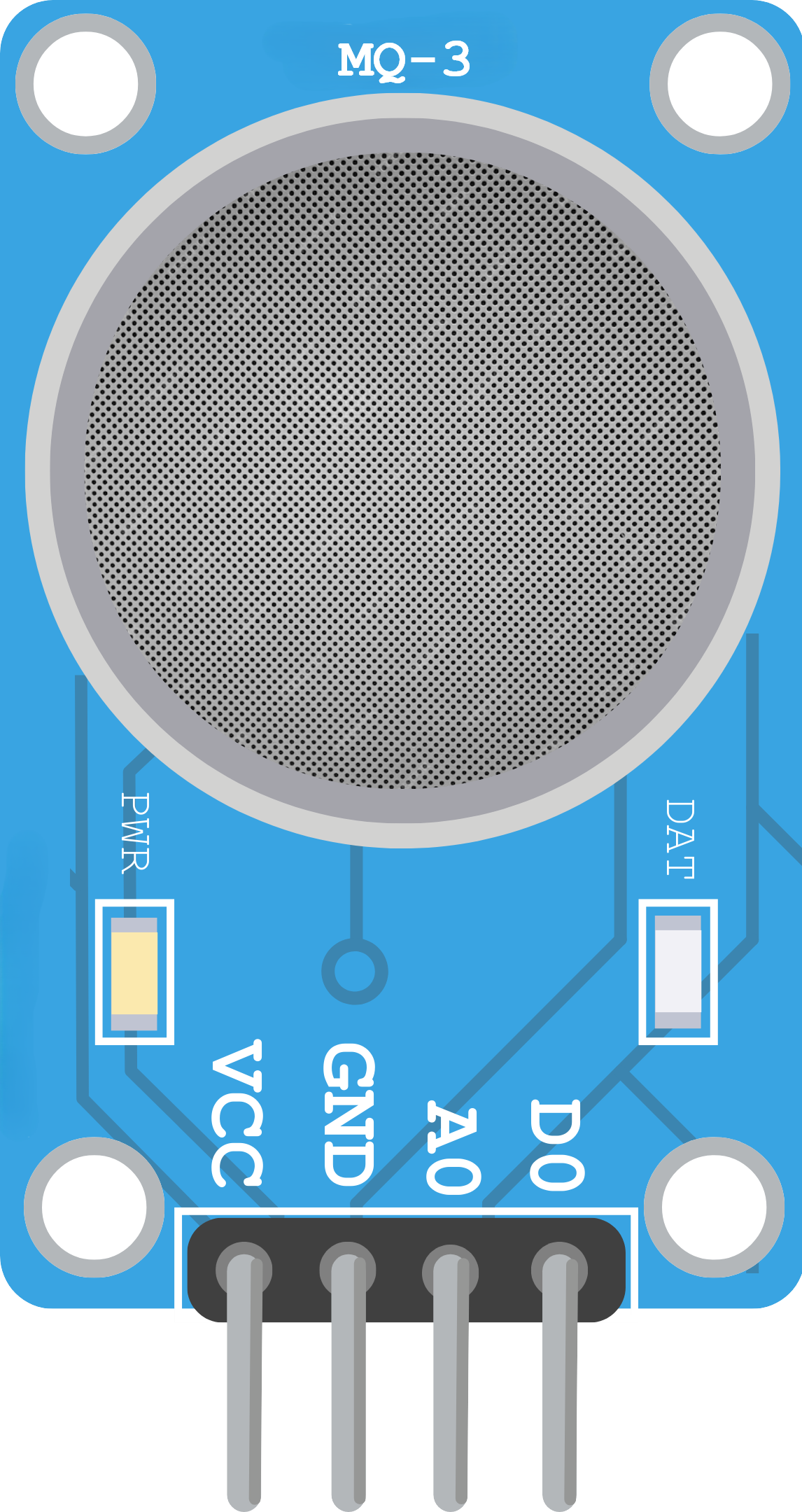
 Design with MQ-3 GAS SENSOR in Cirkit Designer
Design with MQ-3 GAS SENSOR in Cirkit DesignerIntroduction
The MQ-3 gas sensor is a highly sensitive and reliable device designed to detect alcohol vapors in the air. It operates on the principle of resistive change, where the sensor's resistance varies in the presence of specific gases. The sensor outputs an analog signal proportional to the concentration of alcohol vapors, making it suitable for a wide range of applications.
Explore Projects Built with MQ-3 GAS SENSOR
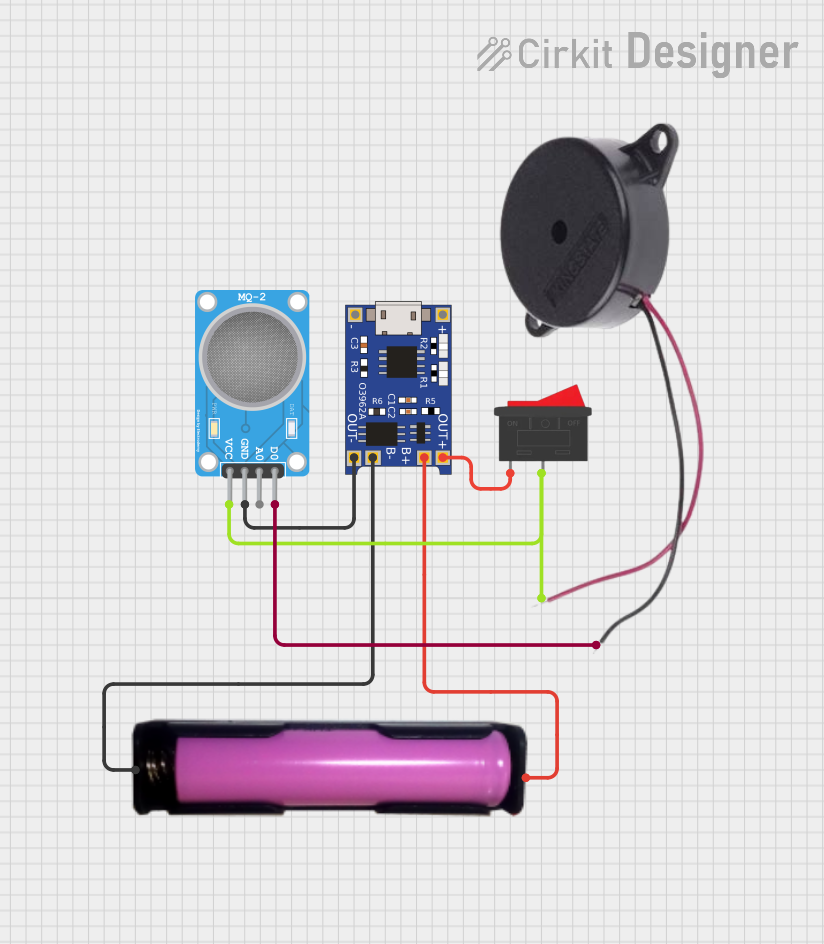
 Open Project in Cirkit Designer
Open Project in Cirkit Designer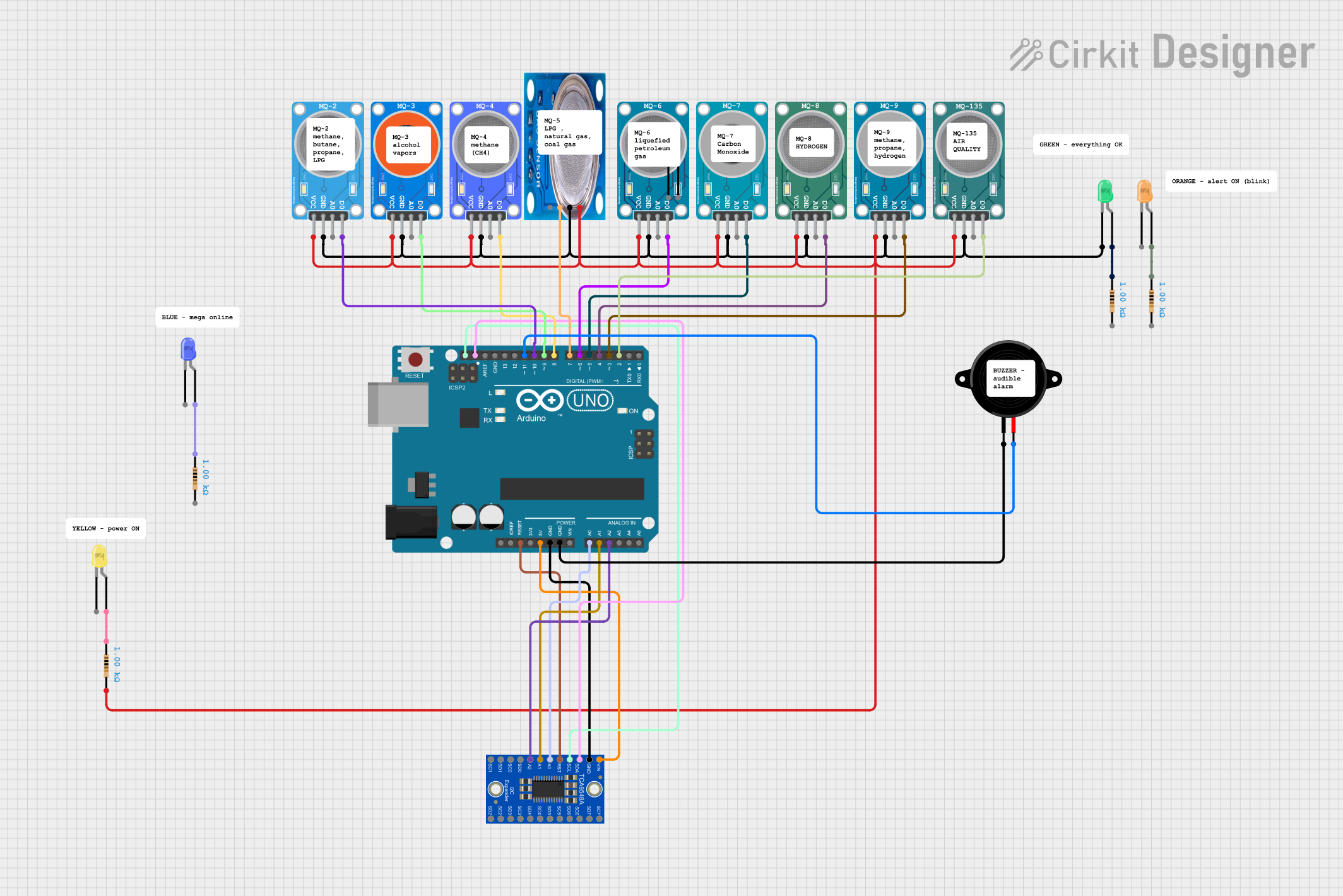
 Open Project in Cirkit Designer
Open Project in Cirkit Designer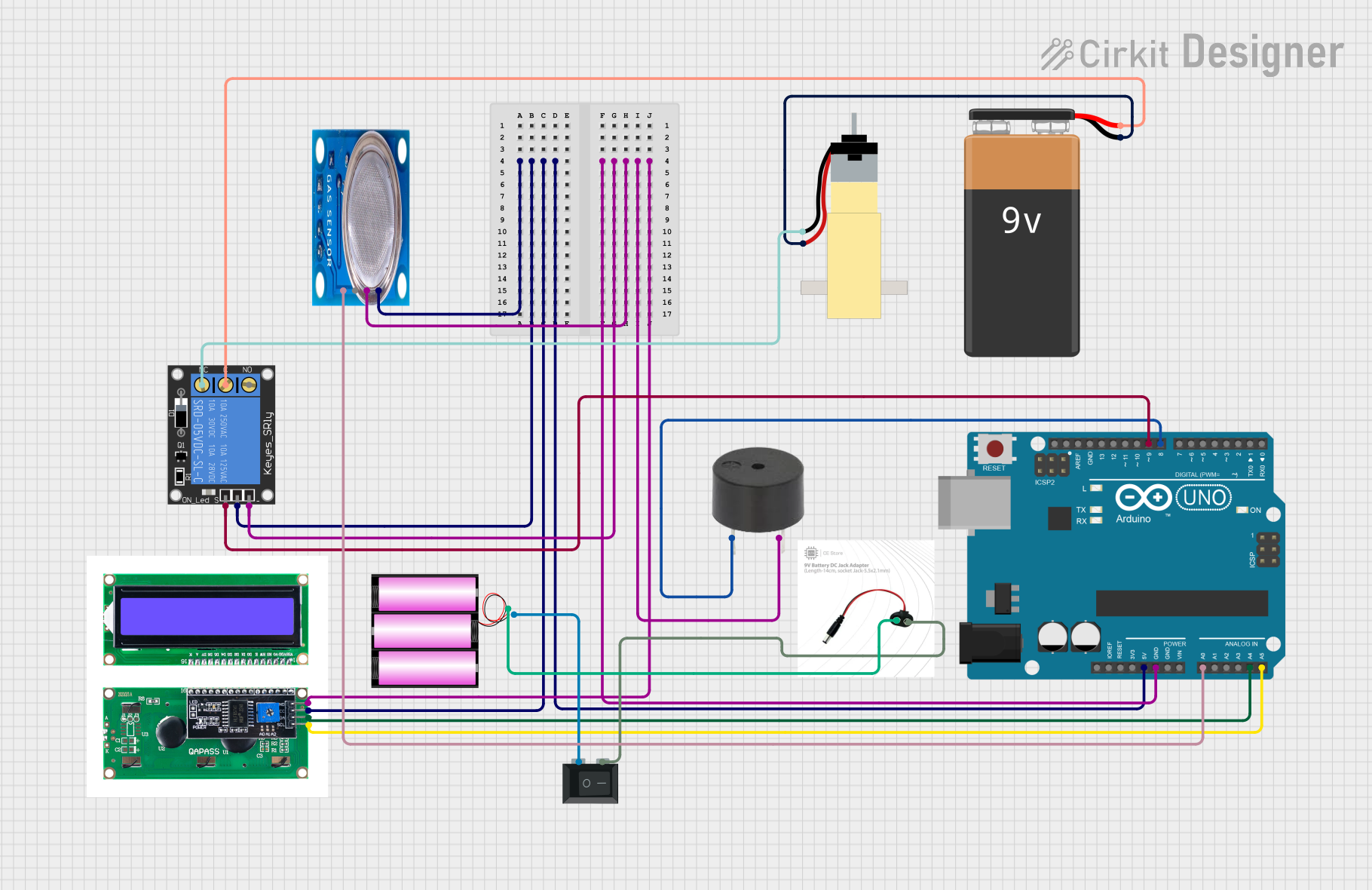
 Open Project in Cirkit Designer
Open Project in Cirkit Designer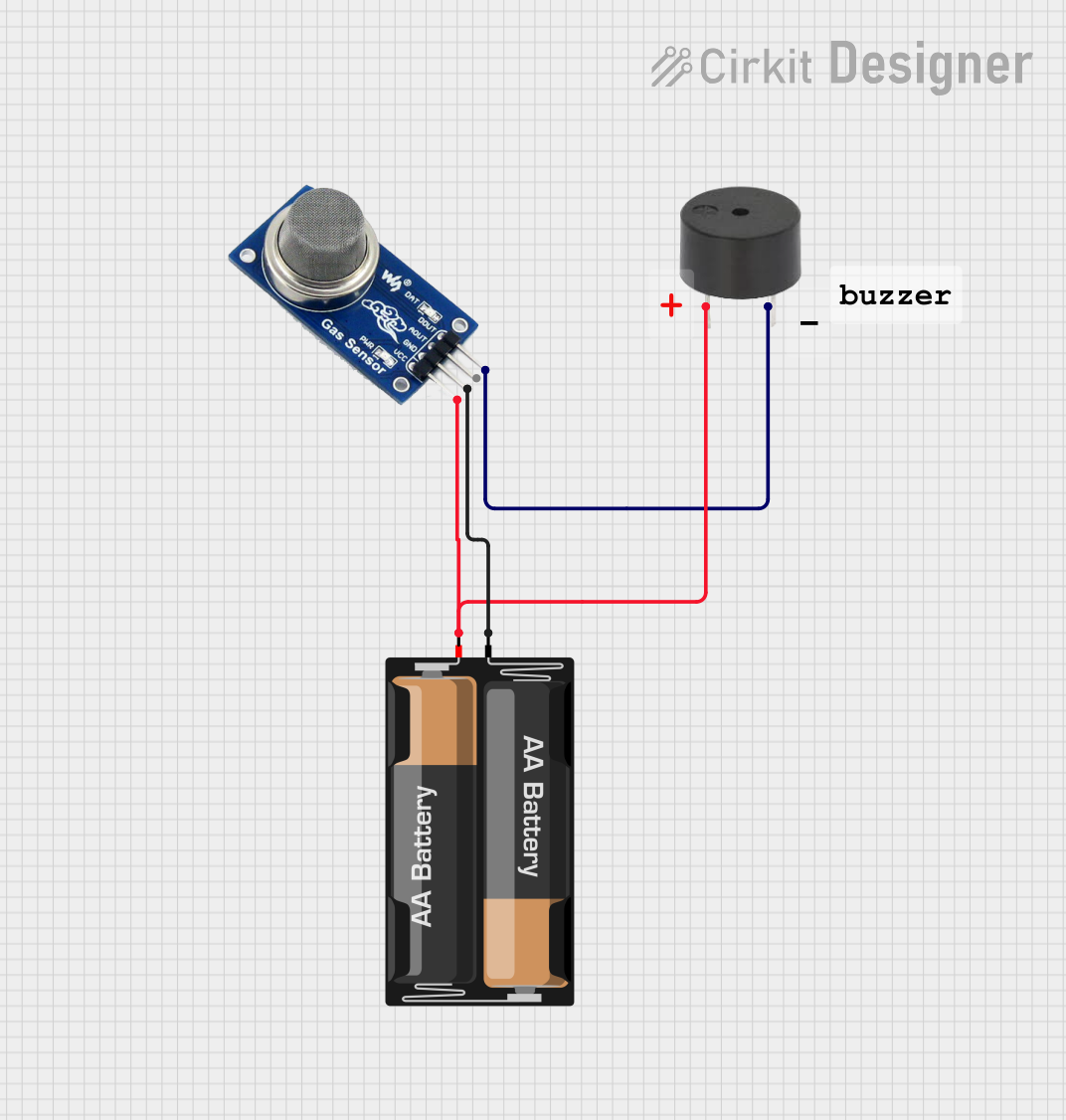
 Open Project in Cirkit Designer
Open Project in Cirkit DesignerExplore Projects Built with MQ-3 GAS SENSOR

 Open Project in Cirkit Designer
Open Project in Cirkit Designer
 Open Project in Cirkit Designer
Open Project in Cirkit Designer
 Open Project in Cirkit Designer
Open Project in Cirkit Designer
 Open Project in Cirkit Designer
Open Project in Cirkit DesignerCommon Applications
- Breath analyzers for alcohol detection
- Gas leak detection systems
- Industrial safety equipment
- Home automation systems for air quality monitoring
Technical Specifications
The MQ-3 gas sensor is designed for ease of use and integration into various electronic systems. Below are its key technical details:
| Parameter | Value |
|---|---|
| Operating Voltage | 5V DC |
| Load Resistance (RL) | 200Ω to 10kΩ |
| Heater Voltage (VH) | 5V ± 0.2V |
| Heating Current | < 150mA |
| Detection Range | 0.04 mg/L to 4 mg/L (alcohol) |
| Preheat Time | ≥ 24 hours |
| Analog Output Voltage | 0V to 5V |
| Operating Temperature | -10°C to 50°C |
| Humidity Range | 20% to 90% RH (non-condensing) |
| Sensor Life Span | > 2 years |
Pin Configuration and Descriptions
The MQ-3 gas sensor typically comes with four pins or six pins, depending on the module. Below is the pin configuration for a common 4-pin module:
| Pin | Name | Description |
|---|---|---|
| 1 | VCC | Power supply pin (5V DC) |
| 2 | GND | Ground pin |
| 3 | AOUT | Analog output pin (provides voltage proportional to gas concentration) |
| 4 | DOUT | Digital output pin (high/low signal based on threshold) |
Usage Instructions
The MQ-3 gas sensor is straightforward to use in a circuit. Follow the steps below to integrate it into your project:
Circuit Connection
- Connect the VCC pin to a 5V power supply.
- Connect the GND pin to the ground of your circuit.
- Connect the AOUT pin to an analog input pin of your microcontroller (e.g., Arduino).
- Optionally, connect the DOUT pin to a digital input pin if you want to use the digital threshold feature.
Important Considerations
- Preheating: The sensor requires a preheating time of at least 24 hours for optimal performance. During this time, the sensor stabilizes and provides accurate readings.
- Load Resistor: Use an appropriate load resistor (200Ω to 10kΩ) between the analog output pin and ground to adjust the sensitivity.
- Ventilation: Ensure proper ventilation around the sensor to avoid saturation and improve response time.
- Calibration: Calibrate the sensor in a controlled environment to determine the relationship between the analog output voltage and the alcohol concentration.
Example Code for Arduino UNO
Below is an example code to read the analog output of the MQ-3 gas sensor using an Arduino UNO:
// MQ-3 Gas Sensor Example Code for Arduino UNO
// This code reads the analog output of the MQ-3 sensor and prints the value
// to the Serial Monitor. Ensure the sensor is connected to the correct pins.
const int analogPin = A0; // Connect AOUT pin of MQ-3 to A0 on Arduino
void setup() {
Serial.begin(9600); // Initialize serial communication at 9600 baud
Serial.println("MQ-3 Gas Sensor Test");
}
void loop() {
int sensorValue = analogRead(analogPin); // Read analog value from MQ-3
float voltage = sensorValue * (5.0 / 1023.0); // Convert to voltage (0-5V)
// Print the sensor value and voltage to the Serial Monitor
Serial.print("Sensor Value: ");
Serial.print(sensorValue);
Serial.print(" | Voltage: ");
Serial.print(voltage);
Serial.println(" V");
delay(1000); // Wait for 1 second before the next reading
}
Best Practices
- Avoid exposing the sensor to high concentrations of alcohol vapors for extended periods, as this may damage the sensor.
- Place the sensor in a stable environment to minimize noise and fluctuations in readings.
- Use a voltage divider circuit if the analog output exceeds the input voltage range of your microcontroller.
Troubleshooting and FAQs
Common Issues and Solutions
No Output or Incorrect Readings
- Cause: Insufficient preheating time.
- Solution: Allow the sensor to preheat for at least 24 hours before use.
Fluctuating Readings
- Cause: Poor connections or unstable power supply.
- Solution: Check all connections and ensure a stable 5V power supply.
Sensor Saturation
- Cause: Prolonged exposure to high alcohol concentrations.
- Solution: Allow the sensor to recover in clean air for a few hours.
Low Sensitivity
- Cause: Incorrect load resistor value.
- Solution: Adjust the load resistor within the recommended range (200Ω to 10kΩ).
FAQs
Q1: Can the MQ-3 sensor detect gases other than alcohol?
A1: While the MQ-3 is optimized for alcohol detection, it may respond to other gases like benzene and methane. However, its sensitivity to these gases is lower.
Q2: How do I calibrate the MQ-3 sensor?
A2: To calibrate, expose the sensor to a known concentration of alcohol vapor and record the analog output. Use this data to create a mapping between output voltage and gas concentration.
Q3: Can I use the MQ-3 sensor outdoors?
A3: The sensor can be used outdoors, but ensure it is protected from extreme temperatures, humidity, and water exposure.
Q4: How long does the MQ-3 sensor last?
A4: The sensor has a typical lifespan of over 2 years under normal operating conditions.